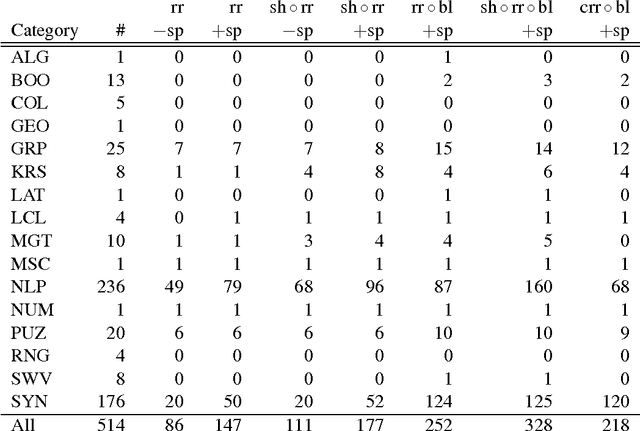Blocking and Other Enhancements for Bottom-Up Model Generation Methods
Paper and Code
Nov 29, 2016

Model generation is a problem complementary to theorem proving and is important for fault analysis and debugging of formal specifications of security protocols, programs and terminological definitions. This paper discusses several ways of enhancing the paradigm of bottom-up model generation. The two main contributions are new, generalized blocking techniques and a new range-restriction transformation. The blocking techniques are based on simple transformations of the input set together with standard equality reasoning and redundancy elimination techniques. These provide general methods for finding small, finite models. The range-restriction transformation refines existing transformations to range-restricted clauses by carefully limiting the creation of domain terms. All possible combinations of the introduced techniques and classical range-restriction were tested on the clausal problems of the TPTP Version 6.0.0 with an implementation based on the SPASS theorem prover using a hyperresolution-like refinement. Unrestricted domain blocking gave best results for satisfiable problems showing it is a powerful technique indispensable for bottom-up model generation methods. Both in combination with the new range-restricting transformation, and the classical range-restricting transformation, good results have been obtained. Limiting the creation of terms during the inference process by using the new range restricting transformation has paid off, especially when using it together with a shifting transformation. The experimental results also show that classical range restriction with unrestricted blocking provides a useful complementary method. Overall, the results showed bottom-up model generation methods were good for disproving theorems and generating models for satisfiable problems, but less efficient than SPASS in auto mode for unsatisfiable problems.
 Add to Chrome
Add to Chrome Add to Firefox
Add to Firefox Add to Edge
Add to Edge